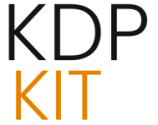The Vista’s New Chapter: UCO Student Newspaper Goes Digital-Only

The world of college newspapers is changing, and the University of Central Oklahoma (UCO) is right in the thick of it. Remember flipping through the pages of The Vista, your campus paper? Well, that familiar rustle of newsprint is becoming a thing of the past. UCO has made the big decision to move The Vista to a digital-only format, marking a significant shift in how campus news is delivered and consumed. This isn’t just about ditching the printing press; it’s a reflection of the broader media landscape and how we all get our information these days.
This move by UCO isn’t happening in a vacuum. Across the country, universities are re-evaluating their student media operations, often leaning into digital platforms to stay relevant and reach students where they are. It’s a big deal for student journalists, campus communication, and even how journalism is taught. Let’s dive into what this transition means for The Vista, its staff, and the future of campus journalism.
The End of an Era: Why Print is Fading for Student Newspapers
For over a century, student newspapers have been a cornerstone of university life, providing a vital link between students, faculty, and administration. Think about it – The Vista itself has been around since 1903, making it one of the longest continuously published student newspapers in Oklahoma. That’s a whole lot of history printed on paper!
But times change, and so do the economics and logistics of publishing. Printing, distributing, and maintaining a physical newspaper can be quite costly. Universities are increasingly looking for ways to optimize resources, and shifting to a digital-only format is a common strategy to cut down on expenses. This allows institutions to potentially reallocate funds to other areas, like improving online content, investing in multimedia journalism, or enhancing digital infrastructure. Plus, let’s be honest, most students today are glued to their phones and laptops, so meeting them online just makes sense for accessibility and engagement.
A Look Back: The Legacy of Print
Student newspapers have always been more than just news sheets; they’re training grounds for aspiring journalists, archives of campus life, and platforms for student voices. Publications like The Dartmouth, founded in 1799, and The Brown Daily Herald, established in 1866, are some of the oldest in the nation, showcasing a long tradition of student-led journalism. The tangible nature of print—holding a freshly printed paper, seeing your byline in ink—offers a unique experience for young journalists. It’s a part of journalism history that many students cherish.
However, the media industry as a whole has been moving towards digital-first strategies for years. This shift isn’t unique to student publications; it’s a trend seen across major news organizations as well. The goal is to reach a wider audience and adapt to evolving media consumption habits.. Find out more about UCO student newspaper digital only.
Navigating the Digital Shift: Challenges and Opportunities for Student Journalists
Moving to a digital-only format isn’t just a simple switch; it brings a whole new set of skills and challenges for the students involved in producing the newspaper. While the hands-on experience of print production—from layout and design to the physical distribution—might be missed, the digital world opens up exciting new avenues for storytelling.
Embracing New Storytelling Tools
Student journalists at UCO, and other institutions making similar transitions, now have the chance to explore multimedia formats. Think embedded videos of campus events, audio recordings of interviews, interactive infographics, and dynamic photo galleries. These elements can make stories more engaging and cater to different learning and consumption styles. Learning to produce this kind of rich, multimedia content is invaluable for preparing students for careers in today’s media job market.
Developing Essential Digital Skills
Beyond content creation, the digital realm demands proficiency in areas like search engine optimization (SEO), social media strategy, and digital analytics. Understanding how to make content discoverable and engaging online is crucial. This transition requires adaptability and a willingness to embrace new technologies, ultimately equipping students with skills that are highly sought after in the modern media landscape. It’s about learning to be a versatile journalist in a digital-first world.
The Monetization Maze. Find out more about University of Central Oklahoma print publication ends guide.
One of the biggest hurdles in the digital transition is online monetization. Unlike the more established models of print advertising, digital advertising can be complex and constantly evolving. Student newspapers need to explore various strategies to generate revenue online, which could include display ads, sponsored content, affiliate marketing, or even subscription models for premium content. Building a strong online presence and demonstrating value to advertisers are key to financial sustainability. Universities might also need to consider institutional support or grants to help student media outlets navigate this financial landscape.
Audience Engagement in the Digital Age: Connecting with Students Online
Reaching and engaging a student audience in today’s fast-paced digital world requires a dynamic and multi-faceted approach. A digital-only newspaper can leverage social media platforms, email newsletters, and interactive website features to connect with readers more effectively.
The Power of Social Media and Interactivity
Social media platforms offer immediate dissemination of news and provide greater opportunities for reader feedback through comments and interactions. This allows student newspapers to be more responsive to campus issues and student interests. Furthermore, interactive features like reader polls, Q&A sessions with campus figures, and comment sections can boost engagement and make the newspaper a more participatory platform. Understanding how students consume news—whether through mobile alerts, curated social media feeds, or dedicated news apps—is key to tailoring content delivery.
Building a Strong Online Presence
A strong online presence is paramount for any media organization, including student newspapers. This means not only having a well-designed and user-friendly website but also actively engaging with audiences across various social media platforms. A consistent and strategic social media presence can help drive traffic to the newspaper’s website, build a loyal readership, and foster a sense of community. Investing in SEO and digital marketing strategies is also essential to ensure that the newspaper’s content is discoverable by a wider audience.
The Evolving Role of University Media and Journalism Education. Find out more about student newspaper transition to digital format tips.
University media, including student newspapers, play a crucial role in shaping campus discourse, documenting institutional history, and providing a critical lens on university affairs. As these outlets transition to digital formats, their role continues to expand.
Campus News as a Watchdog and Community Builder
Student newspapers act as watchdogs, ensuring transparency and accountability within the university community. They document campus life, report on administrative decisions, and give voice to student concerns. In an era where information can be easily disseminated, student journalists have a vital role in providing credible, campus-specific news. Moreover, by fostering dialogue and community engagement through their digital platforms, these publications contribute to a more informed and connected campus.
Adapting Journalism Curricula for the Digital Future
The shift to digital formats has significant implications for journalism education. Universities must adapt their curricula to equip future journalists with the skills needed to thrive in a digital-first environment. This includes training in multimedia storytelling, data journalism, social media engagement, digital ethics, and understanding AI’s impact on journalism. Student media outlets, like The Vista, serve as invaluable training grounds, providing practical, hands-on experience in these critical areas. By embracing digital technologies and innovative storytelling techniques, journalism programs can ensure their graduates are well-prepared for the demands of the modern media industry.
The Future of Student Publications: Innovation and Sustainability
The future of student publications is intrinsically linked to their ability to adapt and innovate within the evolving media ecosystem. While the print format may be diminishing, the demand for credible, student-generated news and information remains strong.. Find out more about collegiate journalism digital platforms strategies.
Strategies for a Sustainable Digital Model
Student newspapers that successfully navigate the transition to digital platforms will likely thrive by embracing multimedia storytelling, engaging with their audiences across multiple channels, and developing sustainable operational models. This may involve exploring new revenue streams, such as digital advertising, sponsored content, or crowdfunding, and fostering strong partnerships with university departments and student organizations. Building a strong online presence and demonstrating value to advertisers are crucial for financial sustainability.
A Call to Action for Campus Media
The digital transformation of campus news is an ongoing process, requiring continuous evaluation and adaptation to new technologies and audience behaviors. Universities need to provide adequate resources and support for student media, including opportunities for professional development in digital journalism skills. Fostering a culture of innovation and continuous learning will enable student newspapers to adapt to the ever-changing digital landscape and maintain their relevance as trusted sources of campus information.
Conclusion: Embracing the Digital Frontier of Campus Journalism
The University of Central Oklahoma’s decision to transition The Vista to a digital-only format is a clear signal of the changing tides in campus journalism. This move, driven by economic realities, technological advancements, and evolving audience behaviors, mirrors broader trends across the entire media industry. By embracing digital platforms, student newspapers can significantly enhance their reach, engage their audiences more effectively, and deliver richer, more dynamic storytelling experiences.
While challenges certainly remain—particularly in areas like online monetization and the continuous development of digital skills—the opportunities for innovation and impact in the digital space are immense. The future of student publications hinges on their ability to adapt, innovate, and steadfastly serve as vital sources of information and engagement for their campus communities. It’s an exciting, albeit demanding, new chapter for student journalism, and we’ll be watching to see how The Vista and other campus papers continue to shape the narrative.





